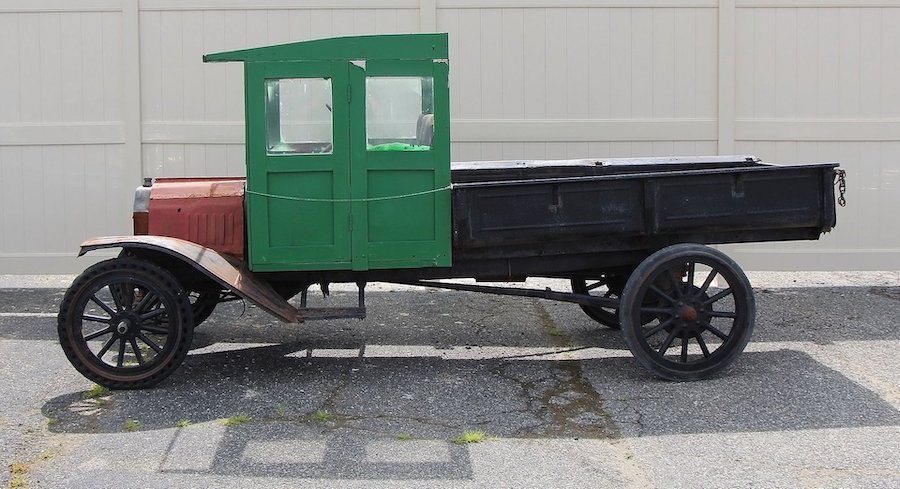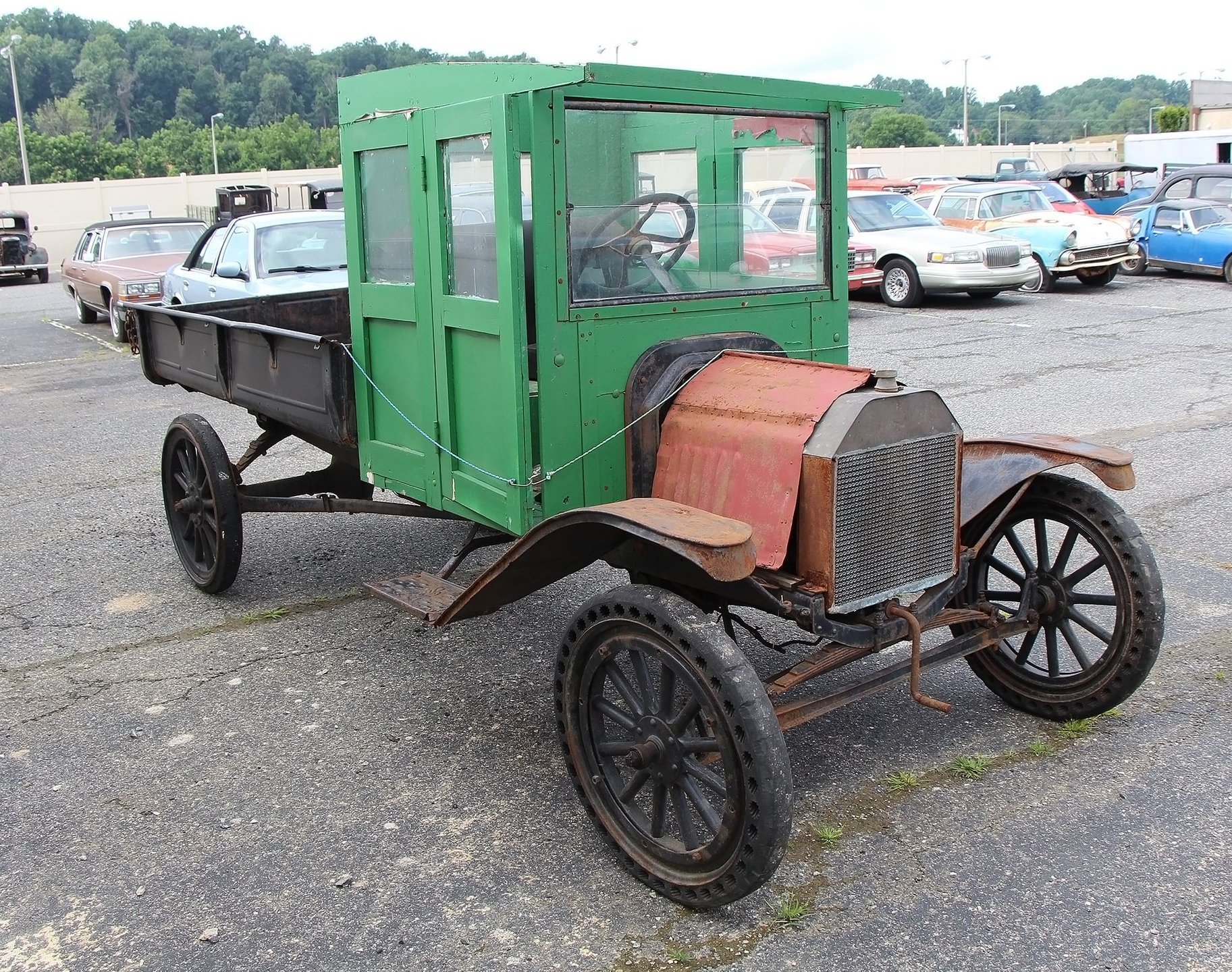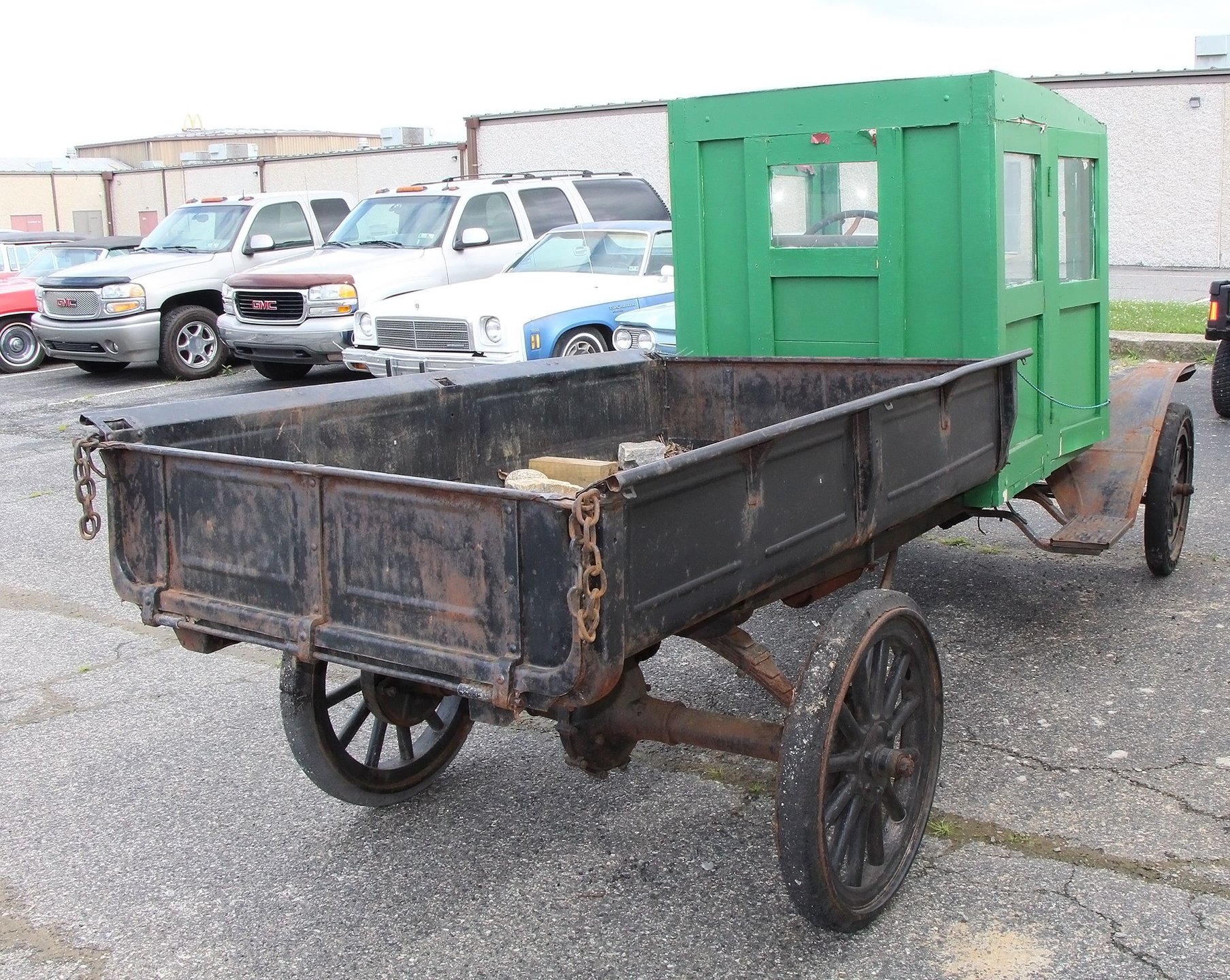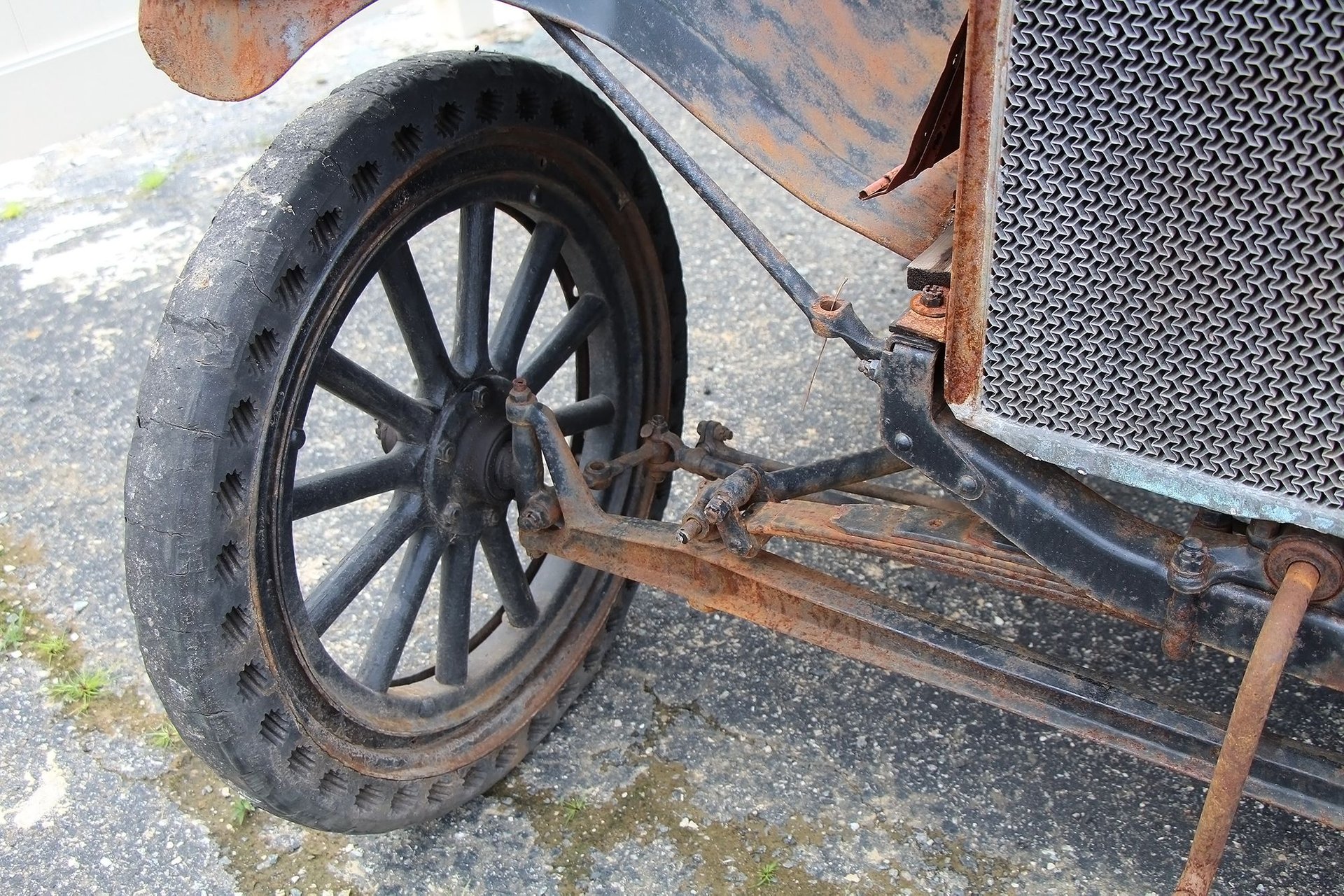1925 Model TT Ancestor of All Dearborn Pick-Ups Is the True Definition of "Ford Tough"

Calvin Coolidge was sworn in as President of the United States in the first inaugural ceremony to be radio broadcast. Chrysler Corporation was founded; a Tennessee court sentenced a biology teacher to a fine of $100 for teaching the Theory of Evolution, and New York became the largest city in the world.
That same year, the Mount Rushmore monument was dedicated, the first television broadcast was performed in England, and the Ford TT Truck surpassed 300,000 units sold in a twelve-month period. It was the best score the farm truck achieved in its ten-year production that saw over 1.3 million vehicles set free on America’s roads.
Henry Ford's first take on a utility vehicle took the shape of a stretched-out Model T platform. Sold as a chassis only, the truck had a three-unit production series in 1917, when it came out. In the following decade, this wiggly, skinny mechanical contraption sold at an average of 130,000 per year – numbers that even today would give bragging rights to almost any manufacturer.
One of those old-timers from 98 years ago somehow made it to this day, hidden in a barn – what more of an appropriate place to store a retired farm truck? Recovered some years later and (most probably) restored, the pick-up is now for sale.
Little is known about this particular forerunner of Ford’s all-time best-selling product – we are referring to the trucks from the Blue Oval – but it is an essential piece of crank force history. The metaphor is partial, as the expression also bears literal meaning – to turn on the engine, some intense manual labor was needed.
You probably have seen Oliver and Hardy silent films (or any other film from the era) where the car starts through a complex sequence of operations that necessitated the driver to get in the cabin to turn the ignition, then jump out and crank the engine. The lever was usually mounted under the radiator at the very front of the vehicle.
The model TT Truck was no exception, and this model here proves it – the rusty bent rod of steel is still in its place, ready to stir some life in this Methuselah four-cylinder flathead. At 177 cubic inches of displacement (2.9 liters), rated at 20 search hp and 83 lb-ft (113 Nm) – thanks to a 3.98:1 compression ratio – the engine was a lowly workhorse in the early days of mass-produced automobiles.
A nice piece of piston history, this engine type had one of the longest production runs of all internal combustion powerplants – precisely 12,000 days, from September 27, 1908, through August 4, 1941. The TT Truck might have had a role in this exceptionally prolonged fabrication cycle.
Other industries quickly adopted the farming vehicle, from the military to oil companies and educational institutions. Naturally, demand for the otherwise sturdy and reliable four-banger wouldn’t wash away with the ending of the vehicle’s production.
The hero of this article is for sale, but the price is a call-for-details affair, and this should not come as a surprise. With the market not in high demand for wrought iron contraptions such as the Model TT Truck, it’s probably better to talk directly to the seller.
The truck is a spectacular sight – a monument of mechanical history that looks like it came from the set of those silent films I mentioned earlier. The cabin looks like a makeshift chicken coop with windows.
In all fairness, while Ford initially offered the Model TT as a rolling chassis, from 1924 onward, the 1,480-lb (670-kg) truck received an optional factory-produced body. The price for such extravagance was around $45 to 65$ (depending on the design). And, in 1925, windshield wipers became available as factory extras (this truck doesn’t have them, though).
The bed is wood-and-steel, with painted planks forming the platform. The same tree-sourced material is used for the floor and dash – motorcar carpentry must have been a high-demand occupation a century ago.
Aesthetics aside – it is a machine from an age when trucks didn’t need to be beauty queens, but rugged, honest bread-earning equipment – the TT looks in decent shape. Rust is present (in abundance, I might say), but it did little to defeat the near-century-old American steel. “Built Ford Tough” had a completely different connotation at the dawn of the piston age.
At some point, the truck might have had its paint refreshed (but this is just an educated guess, judging by the photos). The spoked wooden wheels appear in good overall condition, but are not road worthy, just as the rest of the car isn’t.
A total overhaul is mandatory to make this 1925 TT drivable again – if a potential buyer should so intend. The old Ford could just as well be saved for the sake of the Crank Gods and nothing more. As you can see, the steering column has two levers, and three pedals protrude from the wood-padded dash.
However, nothing on this Ford remotely resembles today’s mode of operation for a standard vehicle. The video demonstrates how to set a Ford TT Truck in motion, and it’s most probably unlike anything you’ve seen before.
Since we mentioned driving, two speeds forward and one reverse was all the Model TT needed to get the work done. At least in stock form, but aftermarket add-ons were available to make the car go faster than the factory-recommended 15 mph (24 kph).
In 1925, a brand-new Ford Model TT would cost around $500, around $8,547.71, if we adjust for inflation. This truck sold here is not meant to be brought back to its hard-working days – although it might be a very achievable goal for a fanatic gearhead – but it would best serve as a timestamp from one of the world’s most influential brands.



Noticias relacionadas
